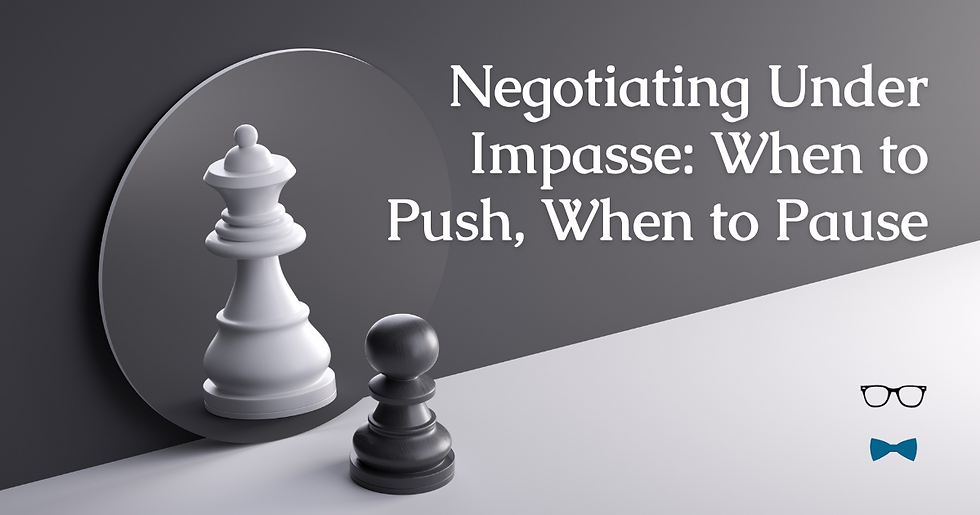Setting the Stage for Mediation
- Cooper Shattuck

- Mar 26, 2024
- 3 min read
One of the most critical steps to a successful mediation is getting off on the right foot. Central to this is identifying the key issues that the parties agree to tackle during the mediation session. While there may be many issues which need to be resolved, the idea is not to bite off more than can be chewed. And, more importantly, that everyone understands what issues are going to be tackled at that session. With that, let's begin setting the stage for your mediation.

Trying to do too much in a limited time, especially when the parties are negotiating different issues, leads to frustration and limited results. The initial stage should lay the foundation for productive dialogue and ultimately reaching a mutually beneficial resolution – of all the issues, even if that means multiple sessions. Here are some strategies to ensure you start your mediation on the right track.
1. Preparation is key.
Before the mediation session begins, it's essential to thoroughly review all issues which need to be addressed. Some issues are gateway issues for others. Others are independent. And for both, it might just depend on how they are tackled. Identify the big goals and then back down through those which will necessarily have to be addressed before they can be accomplished.
2. Open and Honest Communications
Use the mediator to establish open lines of communication from the outset. Encourage the parties to identify which issues that they believe should be addressed with the idea that this initial collaboration will help focus the negotiations once they begin. Actively listen to the other side’s perspectives to gain insight into their underlying interests and motivations.
3. Identify Common Ground
Look for areas of agreement or common interests between the parties. Identifying shared goals or concerns can provide a starting point for constructive discussions. By focusing on common ground initially, you can build rapport and create a positive atmosphere for further negotiation.
4. Clarify Priorities
Once you've identified common ground, work with the other parties to prioritize the issues that need to be addressed during the mediation session. There may be issues that are important to them which you can use to address those important to you. Not all issues may be equally important to both sides, so it's essential to clarify which ones are the most critical for resolution – together and separately.
5. Frame the Agenda
Based on the priorities identified by the parties, create an agenda for the mediation session. Clearly outline the issues to be discussed and the order in which they will be addressed. This helps keep the mediation focused and ensures that all key topics are covered.
6. Manage Expectations
It's essential to manage clients’ expectations regarding what can be achieved during the mediation session. While the goal is to reach a mutually acceptable resolution, not all disputes can be fully resolved in one session. Encourage realistic expectations and emphasize the benefits of compromise and collaboration, presently and in further sessions.
7. Be Flexible
Identifying goals and objectives for each session is important. But, things change. If it seems right to introduce another topic during a session, try it.






Comments